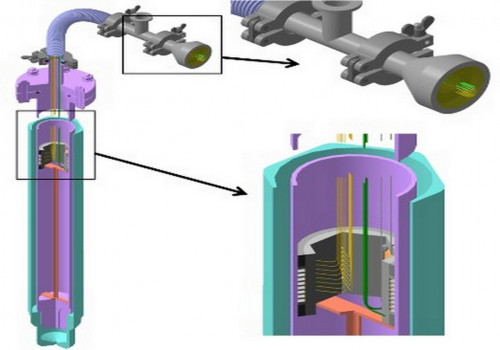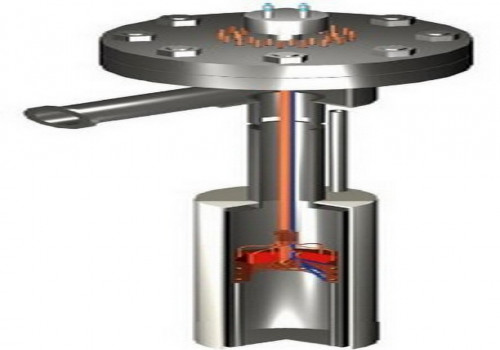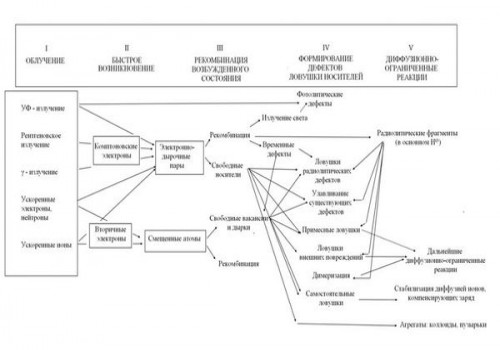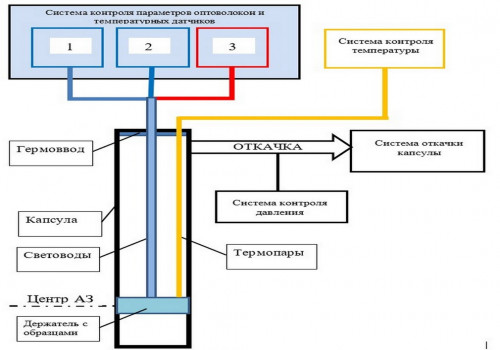COMPLEX OF RADIATION RESISTANCE STUDIES OF MATERIALS AND DETECTORS FOR ITER
30 May 2022




30 Projects to the 30th Anniversary of NNC RK!
PROJECT No.27. Period of 2019–2022. COMPLEX OF RADIATION RESISTANCE STUDIES OF MATERIALS AND DETECTORS FOR ITER
The Republic of Kazakhstan actively takes part in programs of controlled thermonuclear reactor (CTR) in accordance with international agreements and memoranda with various countries. The main area of work is study of structural and functional materials properties as well as measuring means intended for future thermonuclear fusion reactors. It is known that structural materials in thermonuclear reactor will be exposed not only to plasma flow but gamma-neutron radiation. Kazakhstan has well-developed reactor base (IVG.1M and IGR reactors in NNC RK, Kurchatov, WWR-K reactor in INP, Almaty) and material testing base for conduction of radiation and post-radiation studies.
During the process of multi-year work, scientists of NNC RK have conducted numerous out-of-pile and in-pile reactor studies to study radiation effect on various materials properties that has resulted to unique lessons learned concerning reactor material testing. In this regard, within the Cooperation Agreement between ITER Organization and NNC RK signed on the margins of EXPO-2017 exhibition, two agreements for research work conduction in support of international project for ITER construction were concluded in 2018. The main aim of the first agreement was to test radiation resistance of fiber optic and fiber optic temperature sensors based on FBG grating that is supposedly used in measuring ITER systems.
According to the testing results, the fiber optic and fiber optic sensors most suitable for use in the operating conditions of the thermonuclear reactor were selected. The purpose of the second agreement was to measure trace elements in the chemical composition of ITER concrete samples after reactor irradiation. Correct evaluation of concrete activation is one of the key points for accurate determination of dose rate diagrams after shutdown and decommissioning of thermonuclear reactor, thus the second agreement resulted to determination of the elements concentration that may contribute most to the radiation environment in the premises during operation and decommissioning of the future ITER reactor.
As is known, the radiation effect (e.g., fast neutrons and gamma-quantum) exposes to point defects (radiation color centers, RCC) that occur in the quartz glass mesh of the optical fiber, which absorb the light signal propagating along the light guide. Radiation-induced losses (RIL) occurred from the radiation can, among other things, lead to changes in the reflection coefficient (along with possible changes of density occurred during the material radiation). During irradiation, luminescence of RCC excited by nuclear radiation and natural defects of the grid (radioluminescence), as well as radiation of Cherenkov-Vavilov light (at large flows of nuclear radiation) is also observed. If we consider the mechanism of fiber optic damage, it is quite complicated. Obviously, it was quite difficult to estimate the changes in the parameters of fiber under the conditions of their complex exposure. Therefore, experimental irradiation devices were developed and manufactured to test samples of radiation-resistant fiber from various world manufacturers and fiber-optic sensors manufactured by SCFO “Photonika” (Scientific Center for Fiber Optics, Moscow). The irradiation experiments were carried out in two stages. At the first stage, tests were conducted at the research reactor IVG.1M. At the second stage, long-term endurance tests were conducted at the reactor WWR-K.
According to the results of performed tests, the comparative analysis of results obtained at the reactors IVG.1М and WWR-К was made. In IVG.1M reactor, the absorbed dose rate in the fiber optic sensors for 1 MW reactor power was ~ 260 Gy/s; for 6 MW power -1570 Gy/s.
For comparison purposes, the tables present absorbed gamma radiation doses and accumulated neutron fluence in the studied samples for IVG.1M and WWR-K reactors and RIL data for the studied samples during irradiation in IVG.1M and WWR-K reactors. It should be noted that the temperatures of samples greatly varied. At the reactor IVG.1M temperature was about 250 о С, at the WWR-K reactor is about 150 о С at the same absorbed dose. The results showed that RIL of polyamide samples is greatly temperature dependent. Interestingly, that for the IVG-Cu sample, which showed the best characteristics according to the results of long-term reactor irradiation, RIL level during irradiation on the IVG.1M reactor was one of the highest. By doing so, reactor irradiation effect on the parameters of fibers optic and fiber optic temperature sensors was evaluated pursuant to the results of the tests performed that made it possible to select the optimal material to be used in ITER reactor.
As for the second agreement, the research work was aimed at study of activation characteristics of different concrete grades to be used in ITER reactor operation and decommissioning. M8B concrete kern used as a structural material for the ITER reactor was provided for the studies; the kern was obtained from France from the construction site in Cadarache. Irradiation of samples for instrumental neutron activation analysis was performed at the IVG.1M reactor using irradiation container.
Gamma-spectrometry measurements of samples prepared from "normal" and "heavy" concrete cores were performed after irradiation in the IVG.1M research reactor at a thermal neutron fluence 5.3×1016 n/cm2 with different aging of samples from one day to one month. Moreover, the results of determining the elemental composition of the upper and lower parts of the unit "normal" coincide with the accuracy of determination, and the content of elements of the upper and lower parts of the unit "heavy", in general, is the same, except for differences in some elements, such as U, Zr, Fe. In the composition of concrete "heavy" samples, a significant content of up to 59 % of iron in the form of FeO-Fe2 O3 (magnetite) was determined. The content of elements that can make a major contribution to the radiation situation in the premises during ITER reactor decommissioning was determined.
Thus, as a result of the work performed, the content of elements (Cs, Eu, Sm, Tb, Ta) that can make the main contribution to the radiation situation in the premises during ITER reactor decommissioning was determined
Latest news by category:
-
Long-Overdue Recognition
31 December 2025
-
Congratulations on Receiving a Prestigious Award!
31 December 2025
-
Strengthening Transparency Principles
30 December 2025
-
Participation in IAEA International Fusion Research Council Meeting on Controlled Thermonuclear Fusion
25 December 2025